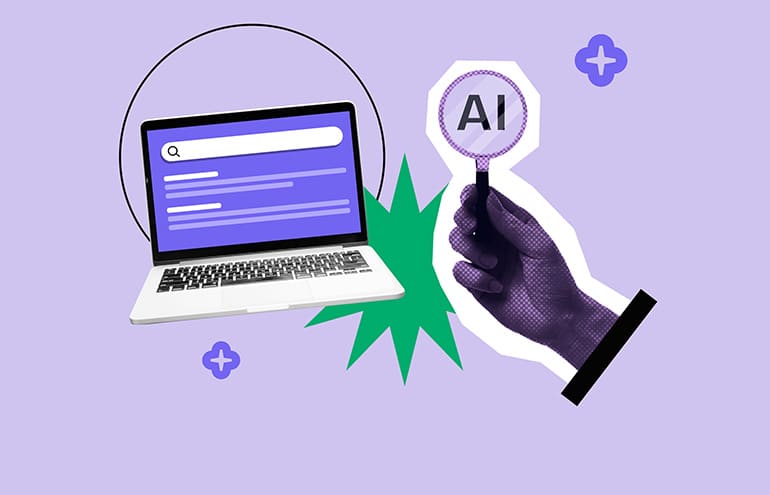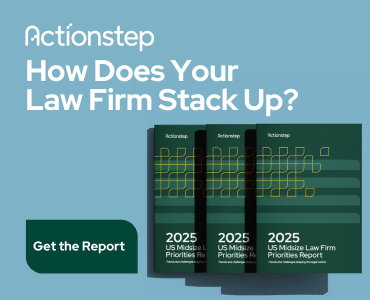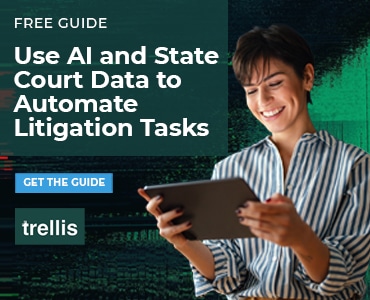For more than two decades, law firms have built their digital visibility around one core assumption: Google is the courtroom of public attention, and every search engine optimization is a chance to make your case before the algorithmic jury. But that courtroom has expanded. Here’s a primer on optimizing for both Google and AI search for law firms.

Table of contents
- Today, Prospective Clients Don’t Just ‘Google It’
- Are AI and Google Search the Same?
- Technical Optimizations vs. Content Strategy for GEO and SEO
- Optimizing for AI: How LLM Search Is Changing Online Marketing
- Semantic HTML: Making Web Pages Readable for Bots, Browsers and Humans
- Structured Data and Schema Markup
- Crafting Content
- Ensure Your Law Firm Shows Up Everywhere!
Today, Prospective Clients Don’t Just ‘Google It’
They ask ChatGPT, they check Perplexity, they test Gemini’s AI Mode, they ask Reddit, and they compare summaries before ever visiting a website. The idea of “search” itself has evolved from a list of blue links into an intelligent conversation. For law firms, this shift changes everything: how clients find legal information, how authority is determined, and how your digital footprint must be structured to appear across multiple AI-driven ecosystems simultaneously.
Making sure your law firm website is ready to get found, no matter which platform prospective clients use to search for legal services, can genuinely be a complicated process that takes a lot of work. However, most of that work can be sorted into one of two big categories:
- Technical optimizations
- Content optimizations
Both have been important for optimizing Google search engine results pages (SERPs). Today, however, the conventional SEO tactics have to be considered in light of how they will affect visibility in search tools driven by artificial intelligence. What this means for your law firm is that you have multiple digital contact points through which to show up for potential clients.
Are AI and Google Search the Same?
You may have experimented with Google’s AI Mode. Perhaps you’ve even become familiar and comfortable with it. On the other hand, maybe you’ve become accustomed to using ChatGPT’s search function or prefer asking Perplexity your day-to-day questions. These tools share some features in common but also have some differences. Collectively, they also differ from the conventional search engines most of us have been using for the past 20 years. Understanding the range of variability in AI search tools and how they compare with conventional search puts you in a position to appreciate the most effective search marketing strategies for your law firm.
AI Mode vs. AI Overviews. In 2025, Google introduced “AI Mode,” which functions both as an extension of its initial experiments with “AI overviews” and as the company’s alternative to ChatGPT Search, which sources information via several different conduits, including direct publisher access and search results from Bing.) Although Google’s AI Mode is powered by Gemini AI (the same large language model, or LLM, that shares names with Google’s virtual assistant), the way AI Mode presents information more closely resembles the user experience (UX) of the company’s AI overviews than the interface you see when accessing the Gemini AI app directly.
AI Mode compared to other LLMs. What AI Mode has in common with other LLM search tools is a general trend away from delivering links for users to explore on their own, and toward delivering information syntheses on the basis of which users can decide to take additional steps or exit the program, equipped with the information they need. As convenient as these topical summaries may be for AI Mode users, they pose a problem for law firms and other businesses that have been accustomed to relying on the search engine optimization (SEO) of their website content to ensure their pages appear in the search engine result pages (SERPs) for relevant queries.
Technical Optimizations vs. Content Strategy for GEO and SEO
Technical optimizations are techniques for managing your law firm website and its pages to make sure hey are easy for search engines to crawl and index, so that your material is available to show to people running searches, and for answer engines to scan and include in their search results. Content optimization is usually called content “strategy,” but it’s important to note that you can have a content strategy that isn’t structured around, and in some cases may not even involve, a plan for showing up in search results. That is, you can have a content strategy organized around newsletters and mailing lists, although these are considered “old school” ways of handling your law firm’s outreach today. However, you can’t have technical SEO or GEO (generative engine optimization) or even AEO (answer engine optimization) without some level of content strategy for the simple reason that there has to be at least some content on your website’s individual pages for search engines, answer engines, or other AI tools to scan and include in the results they show to users.
Technical SEO and Technical GEO Optimizations
Examples of the technical optimizations a law firm website might use for improving SERP (search engine results page) rankings or answer engine citations include structured markup and meta tags, but a specialist in SEO or GEO will tell you that there are many more points to consider. The way these individual factors work together to influence SERP rankings is always changing, based on small tweaks that the developers managing Google and other search engines make to the algorithms that help search engines determine which content to show in response to a specific query, and what order to display that content in.
At the user end, we tend to think that the highest-ranking results will be those the search engine perceives as the most relevant, but relevance is actually only one of several factors that search engines consider. Other factors include domain authority (essentially, the search engine’s assessment of your domain’s trustworthiness and industry position), accessibility, and even how a specific page is placed within the navigational structure of your website. All of these factors apply not just to conventional legal marketing and SEO, but to the AI tools that search the web and synthesize results. Some AI tools have relied heavily on reviewing SERPs and then generating answers based on a compilation of points from those sources, which means that the answers their users get are already filtered by the search engine results, even before the AI generates its response.
Content Optimizations
Content strategy and technical SEO go hand-in-hand. Google and other search engines only display pages in search results if the search algorithms determine that the content on those pages is relevant to a user’s search terms. On the other hand, even highly relevant content may not get picked up and displayed to users if the crawlers looking for new material are unable to find that content and make sense of it for indexing.
Content strategy for conventional (non-AI) SEO emphasizes building expansive sets of written pages, often in the form of blog articles, designed as vehicles for keywords that search engine users are likely to enter when looking for a product or service similar to that offered by the business maintaining the website. This emphasis on keywords is sometimes misunderstood to mean that the topics actually covered and the semantic content of the prose on the page are totally irrelevant, an extreme position which has never been realistic. Instead, the actual development of SEO content for a law firm website goes something like this:
- Start with the law firm’s practice area(s) and a list of terms related to their practice and location (e.g., “divorce,” “custody,” “California”).
- Develop some possible concepts for long-tail keywords (there are several methods for this step, and a number of digital tools that can make the process simpler).
- Test each long-tail keyword for search volume (usually represented as the average number of searches per month) and estimated level of competition (many different SEO tools offer these estimates; each of them uses its own rubric).
- Select several long-tail keywords to use as the basis for content creation, balancing competition against search volume. Some strategists recommend including search “intent” as a factor in evaluating keyword value, but searches related to law topics are so disproportionately information-based that differentiation by search intent may not be as useful for law firms as for other businesses.
- Create content explaining aspects of the law firm’s practice area(s), focusing on topics about which lay people frequently have questions and using at least one of the selected long-tail keywords in each article.
Assuming the goal is not just to show up in search results, but to convert views into leads, the quality of content has always mattered. However, the importance of content quality, as well as how quality may be assessed, is shifting with the emergence of AI search tools.
Optimizing for AI: How LLM Search Is Changing Online Marketing
Some of the principles of SEO hold true even when search engine results are summarized by a generative AI program. ChatGPT, for instance, incorporates the results returned by traditional search engines (usually multiple queries, generated by the AI program under what has been termed the “query fan-out approach) as a “shortcut” of sorts to help streamline the process of finding and formulating an answer.
On the other hand, AI search tools also represent significant changes in the search landscape, both for businesses seeking to appear in front of prospective customers or clients and for the individuals using AI-assisted search tools to find the products and services they need. “Answer engines” like Perplexity consider search results from multiple sources in synthesizing the answers they generate in response to users’ questions. Across the board, LLMs are more effective at “natural language” processing than traditional search engines, a development that means that these tools are much more effective than old-school Google or Bing in recognizing topical relevance, even without an “exact match” for a specific keyword.
Semantic HTML: Making Web Pages Readable for Bots, Browsers and Humans
“Semantic HTML” is a term for clearly delineated hypertext markup language, the type of code that gives webpages many of their stylistic features. “Tags” in HTML serve to differentiate headings from body text; they also provide a structure for organizing the headings hierarchically, and they specify certain types of text formatting.
Clarifying Role in Link Authority
Very importantly for some search engine functions, HTML tags help to signal the contextual relationship between the “anchor text” selected for on-page links and the URLs to which each hyperlink points. Partly, these tags are designed to provide web browsers (such as Chrome, Firefox or Safari) with clear instructions for how to display the page contents to site visitors. However, since the rise of search engine “crawlers” and indexing protocols from the early 2000s on, semantic HTML has also played a role in clarifying for these tools what the major topics and subtopics covered in a page’s content may be, as well as what outbound links are used and how they are related to the text on the page.
Signaling Organizational Structure
Typically, search engines prefer anchor text and link combinations that show a clear relationship. For instance, using a key term discussed on your page as the anchor text for a link to an authoritative source that provides a definition or a history of the concept behind the term. Headings and similar tags, meanwhile, have functioned as something of an “outline,” signaling to search engine bots as well as browsers the main points of the page content and their relative importance (as indicated by heading “level,” e.g., “H2,” “H3” or “H4”).
Functions for Web Browsers vs. Indexing Bots
Semantic HTML gets its name from the fact that the tags used convey meaning; they help to underscore how a website owner wants the contents on each page to be sorted in terms of hierarchy, clarifying which points the site owner considers most important and are most closely related to one another. While web browsers generally read this information and render it visually in terms of font sizes and bolded or italicized text, the same features also facilitate some levels of search engine indexing, so that search engines can reliably recognize a page’s relevance to a particular query and determine when and in which position to present that page in search results.
Using Semantic HTML to Enhance Visibility in AI Search
Semantic HTML can play a similar role for AI search models. Like the bots that crawl and index web pages for traditional search engines, answer engines of all kinds prefer web pages on which the main topics are clearly marked and logically ordered, and the contents of each URL linked on the page share a logical connection with the text to which the link is “anchored.”
In other words, here, the only change you may need to make is to “double down” on your law firm website’s utilization of semantic HTML, especially in areas like blog pages, where the content is often primed to appear in information-focused searches where clear and logical organization improve usefulness and browsing or reading experience for humans, whether they find these pages via traditional search tools or by asking a chatbot for answers.
Most search engine models, both with and without AI assistance, tend to prioritize content that each program’s algorithms identify as having many of the features encoded in its system as increasing value to users. So “playing up” semantic HTML can be a relatively low-cost investment in enhancing your law firm’s visibility in online searches across multiple platforms.
Structured Data and Schema Markup
Structured data is also used for signaling the major components on a webpage and how they relate to one another. Analogous in certain ways to HTML, schema markup has provided an industry-standard, cross-platform system for tagging these data categories and making them readable to web crawlers.
“To web crawlers” is a key point: Whereas semantic HTML does provide some indicators that bots and browsers can read and use, schema markup encapsulates much more detailed technical information, in a format designed expressly to be easily read and interpreted by bots. Historically, schema markup has played a significant role in technical SEO, making pages as “readable” as possible so that their contents can be fully (and accurately) indexed by search engines.
SEO and AI search specialists have debated whether schema markup still matters for LLM-driven search visibility. One factor that complicates the question is that, while Google’s dominance made it easy for digital marketers to work with a single set of parameters (Google’s) and see a strong return on their efforts, the LLM search environment is much more competitive.
Value of Schema Markup for LLM Search vs. Google SERPs
Some tests have shown that schema quality is important to a webpage’s chances of being cited in AI Overviews. At the same time, other researchers have found that the correlation between a website’s use of structured data and its visibility in AI search results is limited. For now, we don’t have any data to suggest that following standard guidance for schema markup has any negative impact on search visibility in answer engines. So, unless and until that changes, the general recommendation is to keep following industry “best practices” for structured data and adding schema markup to your website.
The jury may still be out on how much structured data will boost visibility in LLM answers compared to in traditional SERPs, but, so far, tests that have shown any correlation between schema markup and visibility have yielded positive results: Taking pains to include high-quality schema markup won’t decrease your law firm’s online visibility. Digital marketing professionals agree that structured data is still important for conventional search engine results. Schema markup falls into the category of website refinements that “can’t hurt and might help,” which makes it worth adding to most websites, and likely worth updating if your digital marketing team hasn’t made any adjustments to technical SEO for a while.
Crafting Content
One last thing: Don’t forget the content your law firm puts on these technically optimized pages! Both LLM search tools and traditional search engines like Google aim to prioritize returning content that is clear, relevant and easy for (human) readers to follow. As much as the rush to capitalize on high-traffic keywords has sometimes led law firms (and other businesses) to post blog articles that reiterate the same points for the sake of including multiple keyword variations, Google has consistently said that the company’s aim was to deliver “helpful, reliable, people-first content” in search results.
Ensure Your Law Firm Shows Up Everywhere!
In this new environment, visibility is no longer confined to one platform or search engine; it’s an ecosystem of interconnected touchpoints powered by artificial intelligence. Optimizing for this future requires more than keywords or backlinks. Instead, it demands clarity, technical structure, and content that speaks to both human readers and machine learning models.
Law firms that adapt early will find their content cited, summarized and surfaced across the expanding web of AI search tools. Firms that don’t will risk becoming invisible, even while producing valuable content. The opportunity lies in recognizing that AI search rewards the same qualities clients do: expertise, clarity and trust. When your firm’s digital presence reflects all three, it won’t just show up everywhere; it will stand out everywhere.
Image © iStockPhoto.com.

Sign up for Attorney at Work’s daily practice tips newsletter here and subscribe to our podcast, Attorney at Work Today.
















